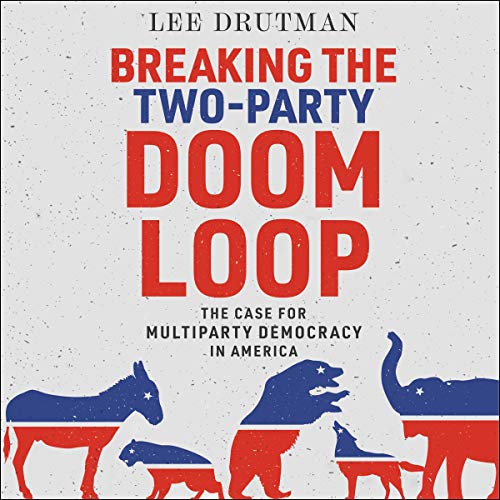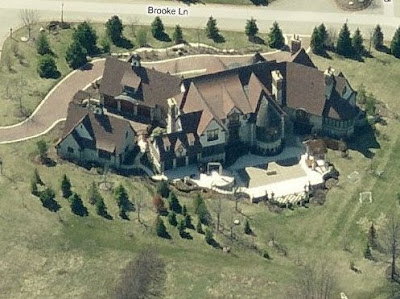Sports Stadiums: A Key To Breaking The Downtown Doom Loop?

Table of Contents
Economic Impact of Sports Stadiums
The economic benefits of a well-planned sports stadium extend far beyond ticket sales. These impressive structures can be significant engines of economic growth for surrounding areas.
Increased Revenue and Employment
Sports stadiums generate substantial revenue through various channels. Ticket sales are only the beginning; lucrative streams also come from concessions, merchandise sales, and the influx of tourism. This translates directly into increased tax revenue for the city. Moreover, the construction and operation of a stadium create numerous job opportunities. From construction workers and hospitality staff to event management professionals and security personnel, a stadium fuels employment across various sectors.
Consider the impact in cities like Minneapolis, where the revitalization surrounding Target Field demonstrably increased property values and attracted new businesses. Or look at the significant job creation associated with new stadium builds in cities across the globe. The economic ripple effect is undeniable.
- Increased tourism and hotel bookings, boosting the hospitality industry.
- Creation of new businesses—restaurants, bars, and shops—around the stadium, creating a vibrant commercial ecosystem.
- Stimulation of the local service industry, from transportation to cleaning services.
Attracting Investment and Development
Beyond immediate revenue and employment, sports stadiums act as magnets for private investment. The presence of a major sporting venue signals to investors that an area is ripe for development. This can lead to a wave of new construction, including residential, commercial, and entertainment spaces. This is precisely what we've seen in cities that have invested strategically in stadium-related infrastructure.
The development surrounding many stadiums includes:
- Improved infrastructure—better roads, public transportation, and pedestrian walkways—improving accessibility for all.
- Attraction of new businesses and residents, leading to a denser, more vibrant urban environment.
- Increased property values in the surrounding neighborhoods, benefitting existing homeowners and stimulating further investment.
Social Impact and Community Revitalization
The positive impact of sports stadiums extends far beyond the purely economic. They serve as important community assets, fostering social interaction and promoting a sense of civic pride.
Community Gathering Spaces and Events
A well-designed stadium isn't just for game days. It can host a wide range of community events—concerts, festivals, family fun days—transforming it into a vibrant hub. These events foster social interaction, create a sense of belonging, and help build a stronger community. Many modern stadium designs prioritize community spaces, creating opportunities for year-round engagement.
Consider:
- Increased social interaction and community engagement, fostering a sense of togetherness.
- Creation of a sense of civic pride, strengthening community identity and attachment.
- Improved public safety and security through increased police presence and security measures during events.
Improved Accessibility and Public Transportation
The construction of a stadium often necessitates improvements to public transportation infrastructure. This benefits not only those attending games but the entire community. Enhanced public transit options—improved bus routes, light rail, or even new subway lines—make the area more accessible and convenient for everyone. Furthermore, well-planned developments around stadiums prioritize pedestrian and cycling infrastructure, creating safer and more enjoyable ways to get around.
Successful stadium developments frequently include:
- Improved public transport links to the stadium and surrounding areas, increasing accessibility for all residents.
- Increased pedestrian and cycling infrastructure, making the area more walkable and bike-friendly.
- Enhanced accessibility for people with disabilities, ensuring inclusivity for all members of the community.
Addressing Potential Drawbacks
While the potential benefits are significant, it's crucial to acknowledge potential drawbacks. Careful planning and community engagement are essential to mitigate these risks.
Financial Risks and Public Funding
The construction and operation of a sports stadium represent a significant financial investment. There are inherent risks involved, and the use of public funds for stadium construction is often debated. Transparent financial planning, diversified revenue streams, and robust risk assessments are critical to ensure the project's financial viability and to avoid placing undue burden on taxpayers.
Mitigating these risks involves:
- Careful financial planning and risk assessment to ensure the project's long-term sustainability.
- Transparent public funding processes to ensure accountability and build public trust.
- Diversification of revenue streams beyond ticket sales to create a more resilient financial model.
Potential for Displacement and Gentrification
The development surrounding a stadium can, if not carefully managed, lead to the displacement of existing residents and businesses. Gentrification, driven by increased property values, can push out long-term residents and small businesses, harming the existing community fabric. To prevent this, it's crucial to prioritize community engagement and implement strategies to ensure equitable development.
Mitigating gentrification requires:
- Community engagement and input in the planning process to ensure the needs of existing residents are addressed.
- Affordable housing initiatives to prevent the displacement of lower-income residents.
- Support for local businesses to help them thrive in the changing environment.
Conclusion
Sports stadiums, when thoughtfully planned and implemented, can indeed act as catalysts for revitalizing downtowns, driving economic growth, and fostering stronger communities. The potential benefits include increased revenue, job creation, improved infrastructure, and enhanced community engagement. However, it's crucial to acknowledge the challenges: financial risks, potential for displacement, and the need for transparent planning. Let's consider the potential of sports stadiums to break the downtown doom loop in your city! By prioritizing community engagement, transparent financial planning, and equitable development strategies, we can harness the power of sports stadium development to build stronger, more vibrant urban centers.

Featured Posts
-
 Ufc 315 Early Predictions And Betting Odds Analysis
May 11, 2025
Ufc 315 Early Predictions And Betting Odds Analysis
May 11, 2025 -
 Boston Celtics Playoff Success Payton Pritchards Contribution To Game 1 Victory
May 11, 2025
Boston Celtics Playoff Success Payton Pritchards Contribution To Game 1 Victory
May 11, 2025 -
 Exploring The Luxurious Estates Featured On Mtv Cribs
May 11, 2025
Exploring The Luxurious Estates Featured On Mtv Cribs
May 11, 2025 -
 Incidente Con Avestruz Boris Johnson Herido Durante Visita Familiar A Texas
May 11, 2025
Incidente Con Avestruz Boris Johnson Herido Durante Visita Familiar A Texas
May 11, 2025 -
 Ormsperma Och Jessica Simpson Sanning Eller Myt
May 11, 2025
Ormsperma Och Jessica Simpson Sanning Eller Myt
May 11, 2025
